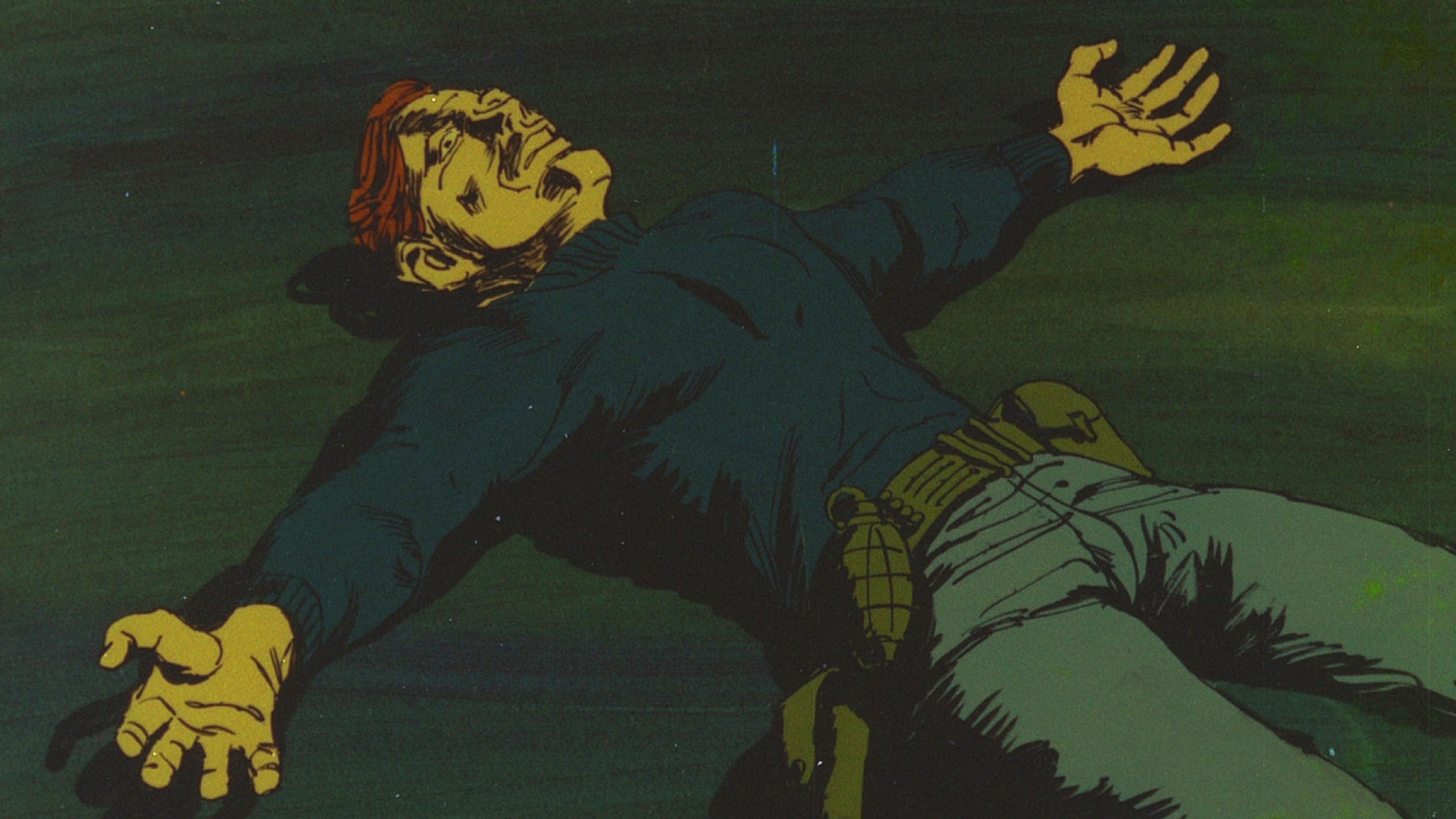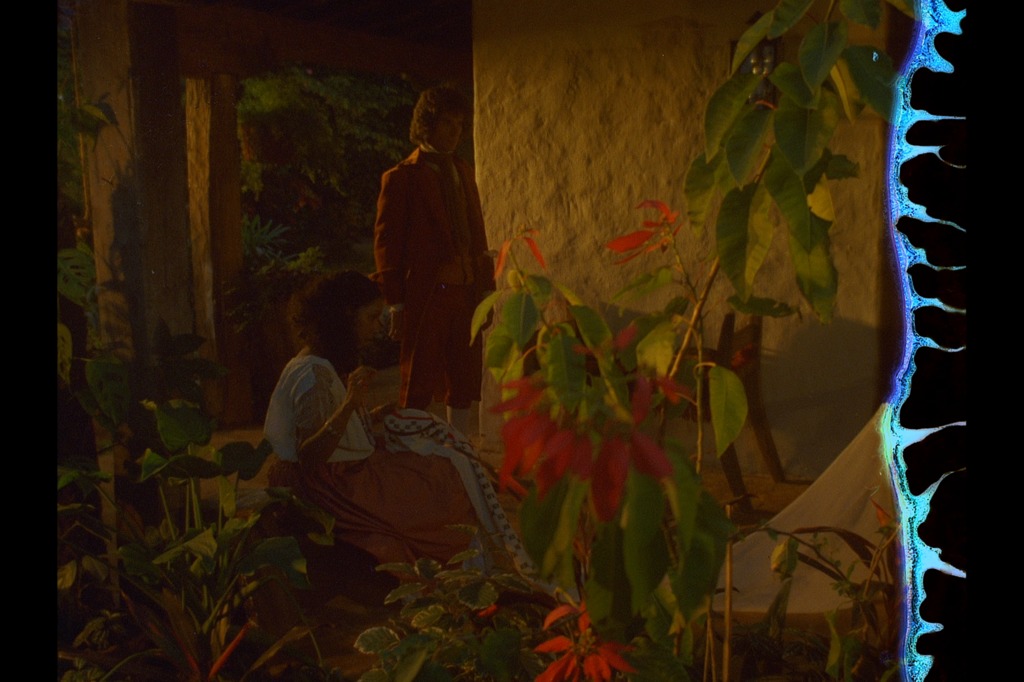 |
| From https://img.reelgood.com/content/movie/ 71c7fa53-0c1e-4230-9044-e585c0e5c6e0/poster-780.jpg |
Director: Kent Bateman
Screenplay: Kent Bateman
Cast: Bo Brundin as Arthur
Malcolm; Gordon Ramon; Kelley Swartz; Mary Jane Early
Synopsis: After a bungled home robbery leaves him without an eye,
artist Arthur Malcolm (Arthur Malcolm)
goes further off the deep end as he secretly kills women for their eyes, using
them for his plastic mould sculptures.
 The father of Jason Bateman and Justine Bateman, Kent Bateman
among directing a few films and television, and producing Teen Wolf Too (1987), also made and wrote this dirty little film
named The Headless Eyes. Knee deep
in the American independent genre industry in 1971, which writer/musician Stephen Thrower has famously chronicled
beyond just that year in the book Nightmare
U.S.A., this feels like the weird uncle of Abel Ferrara's The Driller
Killer (1979), also filmed in New York City. Ferrara's mainstream debut* was a grim-fest where an artist eventually
loses his mind and goes on a kill-frenzy with a battery powered electric drill;
imagine that with an artist who is already insane here and replaced Ferrara himself in that role with Swedish
actor Bo Brundin, who in a really odd
but interesting detail learnt for this review got a few mainstream roles from
the late seventies into the eighties, one-off roles in major TV shows like Hawaii Five-O and The A-Team. Not bad considering here, with his thick accented
English and looming insane look as a deranged eye patch wearing killer who rips
eyes out for his art, this is as weird and grimy a movie to appear as you could
get as an actor, the kind that with one look at it would cause someone to want
to be in the other room for you. As I'll get into later on, that's not a cheap
joke at Brundin's expense; instead,
it feels appropriate the entire viewing experience that you feel uncomfortable
even the how the lead acts.
The father of Jason Bateman and Justine Bateman, Kent Bateman
among directing a few films and television, and producing Teen Wolf Too (1987), also made and wrote this dirty little film
named The Headless Eyes. Knee deep
in the American independent genre industry in 1971, which writer/musician Stephen Thrower has famously chronicled
beyond just that year in the book Nightmare
U.S.A., this feels like the weird uncle of Abel Ferrara's The Driller
Killer (1979), also filmed in New York City. Ferrara's mainstream debut* was a grim-fest where an artist eventually
loses his mind and goes on a kill-frenzy with a battery powered electric drill;
imagine that with an artist who is already insane here and replaced Ferrara himself in that role with Swedish
actor Bo Brundin, who in a really odd
but interesting detail learnt for this review got a few mainstream roles from
the late seventies into the eighties, one-off roles in major TV shows like Hawaii Five-O and The A-Team. Not bad considering here, with his thick accented
English and looming insane look as a deranged eye patch wearing killer who rips
eyes out for his art, this is as weird and grimy a movie to appear as you could
get as an actor, the kind that with one look at it would cause someone to want
to be in the other room for you. As I'll get into later on, that's not a cheap
joke at Brundin's expense; instead,
it feels appropriate the entire viewing experience that you feel uncomfortable
even the how the lead acts.
The film immediately lets you in
on what's going to be witnessed in the introductory scene - Brundin's character is introduced over a
woman in her bed, with intentions to rob her, only to get the King Lear treatment and have an eye
spooned out. The soundtrack from then repeats the same screaming of his, as he
flails himself out of her apartment into the street in front of bystanders, the
same sound bite over and over again about his eye ad nauseum. This makes one
aware as well a larger part of the film's weirdness is it being a very low
budget production where logic was a subjective thing, budgets were low and
experimentation was encouraged, even if not sure of what it was doing.
Filmed in New York City, the
environment itself is part of the feeling of needing a shower immediately after
the viewing. A run down metropolis, utterly against sixties idealism already
from a few years before just in the atmosphere felt, the hippies long drugged
out and in-between claustrophobic rooms to tacky living room aesthetics a sense
everyone's trapped in a confined space, something that'd seep even into big
Hollywood productions through the decade. Our lead Arthur Malcolm himself, in
the middle of this, is already a distinct figure, pronounced accent and
forcefulness in his performance alongside the giant black eye patch. The character's
also already mad when he starts, after the eye gouging introduction, and whilst
it's a series of clichés from past and future films, obsessed with preserving
beauty and clearing away "filthy" women, paranoid and proto-Driller Killer angst as an artist, Brundin's performance is legitimately
creepy and freakish as he rambles to himself. Partially as much of this is
accidental, as I suspect a lot of the film is post-synched in sound, but as
much of it is because, whether he could have been a varied actor beyond this one
film, he fits here looking and acting like a legitimately deranged person.
Arguably the film's a
directionless mess - most of it is lengthy scenes of Arthur Malcolm pursuing
victims, eventually becoming obsessed with a blonde female actress which lasts
a long time and is the only backbone to a work which feels like a lingering
nightmare instead. The film only shows some sense of progression a few times
only to uncut them in the lead's sense of isolated psychosis - such as when his
girlfriend appears, a middle class figure whose class and his neurosis created
a wedge between them, or a young woman who wants to learn his art he tries to
distance himself from. Structurally The
Headless Eyes is a screenwriting class's worst nightmare as a result.
Eventually concluding with the killer finding himself in a meat locker, being creped
out by dead animals staring at him when he accomplishes a gruesome murder and
eye gorging, the cheap gore and animal eyes certainly gross, the film ends with
an anti-climax. A legitimately cold experience unless one was prepared for the
ridiculous in odd films like this.
In general, production wise, The Headless Eyes befits this material
even if it's a grungy, far from perfect work. Something shot by chance, with
"stolen" shots or whatever was available. The music itself kept me on
edge too, a druggy seventies mess of post psychedelia and what I expect would
be the audio equivalent of taking crack, not since Psyched by the 4D Witch (1973) the burn out of late sixties music
felt and staining my ear canals. It's a dishevelled mess which argues that,
whilst an ugly mass, technical sloppiness if implemented again on purpose could
add a greater sense of creepiness that cannot be mustered with a professional
orchestral score exception in the best cases. Here in its accidental form it
provides a lot of freakishness even if the material can be unintentionally
hilarious.
Abstract Spectrum: Disturbing/Grotesque/Weird
Abstract Rating (High/Medium/Low/None): Low
Personal Opinion:
In lieu to the long anticipation
I had for The Headless Eyes, it's
not an American oddity in the truest sense, and I'd advise caution for a film
like this one. It's at times a film even at a short length for a feature feels
too long and out stays its welcome, but it makes up for it in what a mad
experience it is if you can tolerate it. For us who've willingly dived into the
currents of US independent made horror, it's a fascinating scuzz fest, one of
those films which tap into an actual dark subterranean of their culture at the
time.
 |
| From https://www.mondo-digital.com/headlesseyes5.jpg |
=====
* Note that Ferrara's first feature length film was the porn film 9 Lives of a Wet Pussy (1976). Whilst rumours
exist of an actual Western re-release, nothing has materialised in 2019 yet.



_Episode_Level_3_Random_Encounter.JPG/revision/latest?cb=20130728141857)



















